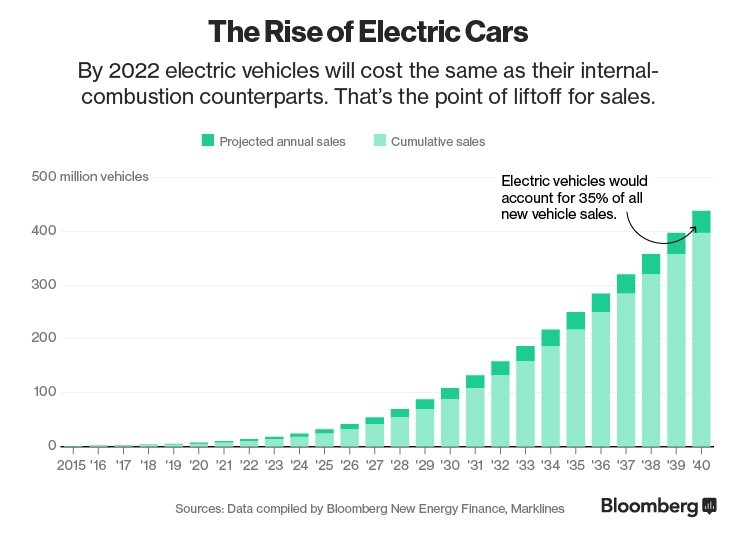The Role of Simulation in Building the e-Mobility Revolution
Electrified, connected, autonomous, and shared are four mobility megatrends having game-changing effects on the automotive and transportations markets. These interconnected trends are converging and will drive more changes in the coming years - than what has happened in these markets during the previous decades. The shared mobility industry is growing rapidly and with new initiatives happening across the globe. In North America alone there are +400 cities with car sharing services and +120 cities have launched bike sharing systems. Cars will save lives by talking to each other and to the infrastructure around them in a connected car market where revenues will nearly quadruple between 2015 and 2020 led by drive assistance and safety technologies. Bloomberg points out today new registrants of electric cars (EVs) are hitting records. By 2022 EVs will cost the same as internal combustion vehicles and by 2040 EVs will account for 35% of all new vehicle sales.

e-Mobility or electric-mobility refers to clean and efficient electric and hybrid vehicles that use electric powertrain technologies, in-vehicle information, communication technologies and connected infrastructures. e-Mobility systems are complex and add new key elements, including batteries, power electronics and electric motors, which bring new design and development challenges. To face and solve such challenges with these complex systems, the usage and combination of multi-domain model-based development, using 0D and 1D systems tools, with 3D multi-physics simulation tools is key.

Lightweighting is a key aspect, where batteries are not only heavy but also occupy a large space, and where dynamics and travel range per charge depend on the number of batteries and the total weight of the vehicle. The internal combustion engine, which was masking the noise of several systems in the vehicle, is not there anymore and sound and vibration engineers need to find smart ways to control the sound and vibration characteristics of vehicles using NVH solutions in a scenario where sound and vibration are important selling points for new and upcoming EVs. A system model of a vehicle using as input drive cycles (speed vs time) can provide engineers with key figures of the vehicle, like state of charge of the battery or power demands for the electric machine. How to design an electric motor during the concept phase is key to achieve a high efficient and low weight machine, which is directly connected to power electronics and delivering a wide range of constant power. Thermal effects on electric motors are also key aspects where engineers need to pay special attention to.
In electric-mobility vehicle connectivity and electromagnetic compatibility (EMC) are also key aspects in existing and future cars. EMC describes the ability of electronic and electrical systems and components to work correctly when they are close together. In particular, electric and hybrid vehicles work with higher voltages, non-linear components and an increased number of electronic systems, which can cause undesired electromagnetic noise and interferences that can prevent car manufacturers and suppliers from passing the compulsory EMC tests defined by the international and local regulatory administrations, tests they must fulfill and pass prior to sell the vehicle locally and/or in other regions. The usage of electromagnetic simulation for EMC during the vehicle development process is growing, where one of the main usages is the simulation of EMC tests for pre-validation before EVs hardware prototypes are available and to make earlier decisions. In the image below, you have the simulation of an EMC test (immunity to electromagnetic fields from off-board sources) for an electric SUV that was recently launched in the market.

On October 16th we will be having an exciting seminar in Paris on all of these topics driving the design of the future e-Mobility at the 2018 Global Altair Technology Conference (ATC). Learn more about the conference and join us in Paris to learn from industry experts and network with peers from around the world: https://altairatc.com/paris2018/.
Explore Altair’s solutions for e-Mobility: https://www.altair.com/emobility

e-Mobility or electric-mobility refers to clean and efficient electric and hybrid vehicles that use electric powertrain technologies, in-vehicle information, communication technologies and connected infrastructures. e-Mobility systems are complex and add new key elements, including batteries, power electronics and electric motors, which bring new design and development challenges. To face and solve such challenges with these complex systems, the usage and combination of multi-domain model-based development, using 0D and 1D systems tools, with 3D multi-physics simulation tools is key.

Lightweighting is a key aspect, where batteries are not only heavy but also occupy a large space, and where dynamics and travel range per charge depend on the number of batteries and the total weight of the vehicle. The internal combustion engine, which was masking the noise of several systems in the vehicle, is not there anymore and sound and vibration engineers need to find smart ways to control the sound and vibration characteristics of vehicles using NVH solutions in a scenario where sound and vibration are important selling points for new and upcoming EVs. A system model of a vehicle using as input drive cycles (speed vs time) can provide engineers with key figures of the vehicle, like state of charge of the battery or power demands for the electric machine. How to design an electric motor during the concept phase is key to achieve a high efficient and low weight machine, which is directly connected to power electronics and delivering a wide range of constant power. Thermal effects on electric motors are also key aspects where engineers need to pay special attention to.
In electric-mobility vehicle connectivity and electromagnetic compatibility (EMC) are also key aspects in existing and future cars. EMC describes the ability of electronic and electrical systems and components to work correctly when they are close together. In particular, electric and hybrid vehicles work with higher voltages, non-linear components and an increased number of electronic systems, which can cause undesired electromagnetic noise and interferences that can prevent car manufacturers and suppliers from passing the compulsory EMC tests defined by the international and local regulatory administrations, tests they must fulfill and pass prior to sell the vehicle locally and/or in other regions. The usage of electromagnetic simulation for EMC during the vehicle development process is growing, where one of the main usages is the simulation of EMC tests for pre-validation before EVs hardware prototypes are available and to make earlier decisions. In the image below, you have the simulation of an EMC test (immunity to electromagnetic fields from off-board sources) for an electric SUV that was recently launched in the market.

On October 16th we will be having an exciting seminar in Paris on all of these topics driving the design of the future e-Mobility at the 2018 Global Altair Technology Conference (ATC). Learn more about the conference and join us in Paris to learn from industry experts and network with peers from around the world: https://altairatc.com/paris2018/.
Explore Altair’s solutions for e-Mobility: https://www.altair.com/emobility




